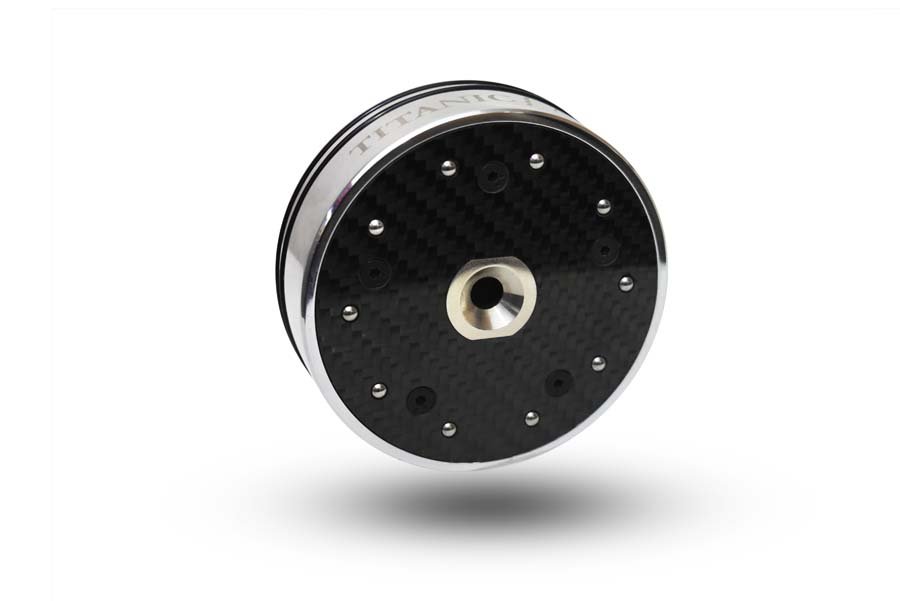TITANIC AUDIO NEWTON CLAMP REVIEW
The Newton record clamp from Titanic Audio is as its name suggests a clamp for stabilising your records on your turntable. Alan McIntosh has a play with this £500 record player accessory.
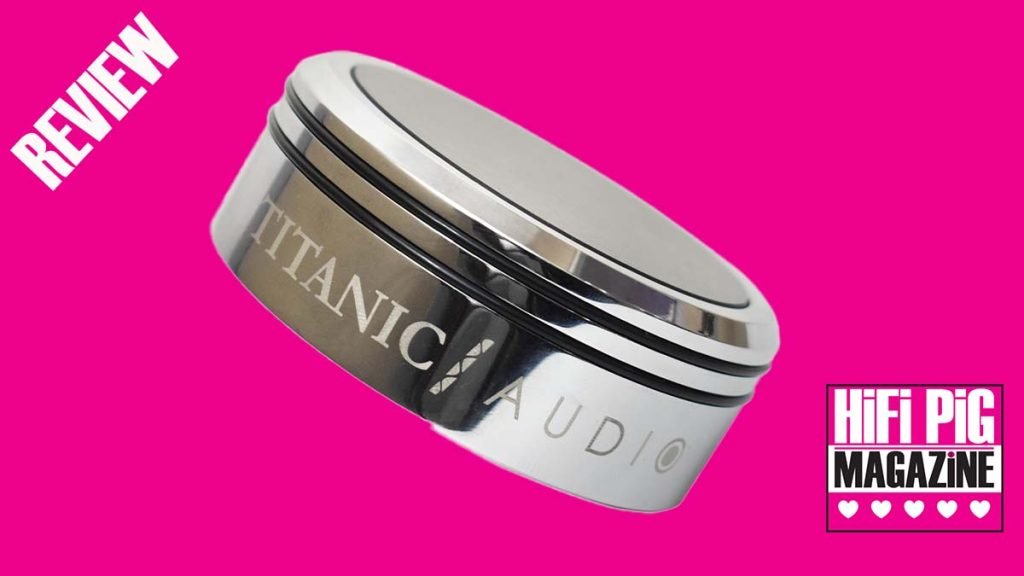
Titanic Audio are a relative newcomer in brand terms, and have been bringing a line of high-quality cartridges to the market for around 3 years if memory serves well (unlikely) and hail from Northern Ireland. With a total of three cartridges in their range I had the pleasure to review their entry-level Model, a pickup which offered high compliance and very easy to enjoy sound. Titanic Audio is also part of the brand stable that includes Titan Audio who many will know for their well respected power products such as cables and blocks – my own system is predominantly powered by Titan. Now Titanic are offering what they term the perfect partner to your stylus – the Newton Record Clamp.
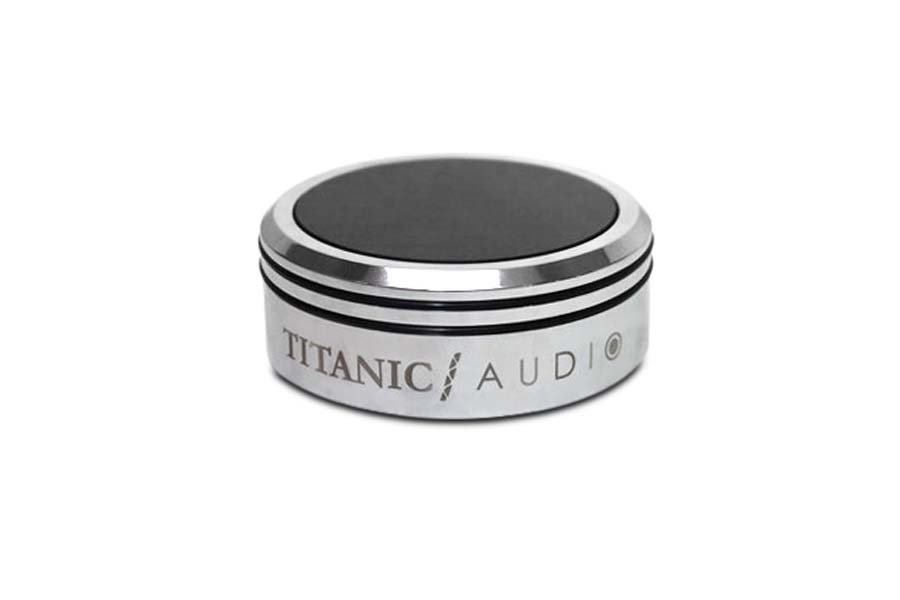
BUILD QUALITY AND FEATURES OF THE NEWTON CLAMP
Record weights and clamps are not new of course, some screw down like Michel, some just rest on the record, some are super heavy (not for use on suspended decks IMHO), and some are very lightweight. All aim to address the common challenges of resonance (vibrations in the record heading into the stylus) and some also try to address mild warpage. In this case “Clamp” is a slight misnomer as there is no screw or grip, the Newton is placed over the spindle so “weight” for me is a more clear name, but hey ho, I’m not in marketing and regardless of what its name is, it’s the sonics merits we are interested in.
The Newton Clamp arrives well-packed and immediately it’s obvious that this is a robust clamp. Opening the packaging you are treated to a beautifully CNC milled and weighty aircraft-grade aluminium outer body with a lovely Chrome finish, tapered at the top and with the Titanic Audio branding around the side. On top you have the exposed carbon fibre body also showing the Titanic Audio branding. The Newton clamp is described by Titanic as a Monocoque design (French for Single Shell) relating to its Carbon skin interior creating the core of its rigidity, but allowing weight to be kept to an optimal level. Monocoque design, also known as “Structural Skin“ took off (sorry, couldn’t resist it) with early aircraft where layers of outer skin materials were glued together and placed over a lightweight frame – the skin providing the rigidity and strength – and has since gone on to be employed across automotive and aerospace industries.

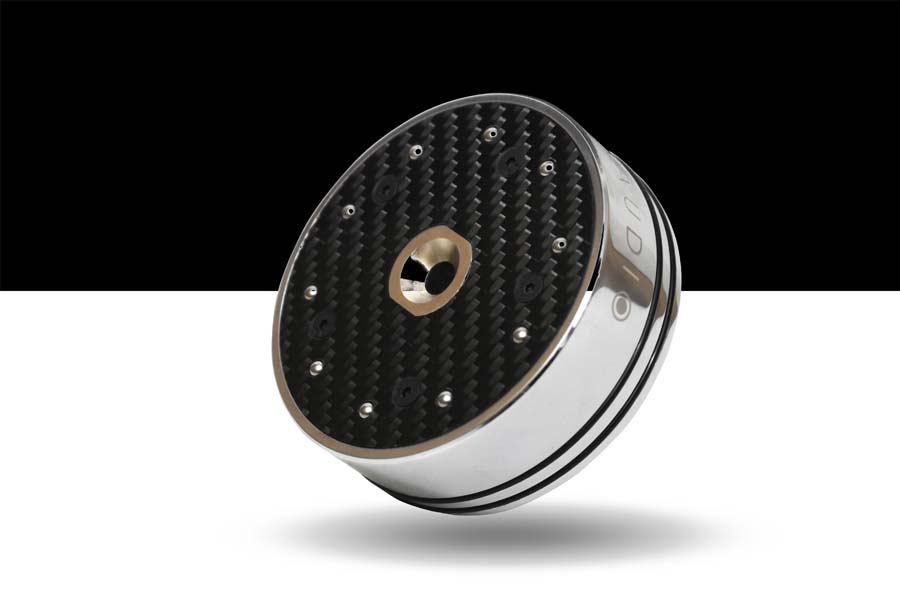
Around the outside walls of the Newton are two parallel rubber rings which dont offer an obvious sonic advantage, but do aid in gripping the clamp. However, turning it over to see the underside is where things get interesting. You get more of that lovely carbon fibre skin, two-tone in appearance due to the “weave” when highlighted in the light, a central cavity (without screw thread) to accommodate your turntable spindle, and – key to the Newtons design – 10 small spring loaded ball bearings which when the clamp is placed create, in Titanic’s words, the ideal downforce applied onto the record. This downforce aids tracking and in older or dished records can improve mild warpage.
Suspension is a key principle in damping solutions. How many of us use damping based on springs, magnets, or squishy rubber? We believe on damping for its ability to reduce vibration. Couple suspension with mass and your instinct tells you vibrations should be better controlled. This is what the Newton Clamp sets out to do, I believe. Placing it on the record you not only get that “controlling” mass to hold down your vinyl, both tempering unwanted vibrations and flattening mild warping, but in tandem, you get even weight distribution with the help of basic physics and a damping effect of the suspension. Some folk feel that over-controlling with too much rigidity can be counterproductive to music as it “throttles” the natural timbre and sound – I know that Mark Baker of Origin Live is one such prepotent of “loose fit”.
SOUND QUALITY
As different mats, platters, and materials can interact (or counteract) the performance of a given solution, I’ve elected to run the Newton Clamp on two turntables. One is my reference Origin Live Calypso Mk4 with its upgraded 4 layer platter/mat and running an Illustrious 9” arm with the wonderful Hana Umami Red cartridge, but also on my more “standard” Technics 1210MK3D running stock arm and a lovely custom wooden bodied AT VM95SH cartridge, with an upgraded Timestep V PSU and stock rubber platter mat. Aside from material sympathy, I think this also gives an insight into the upgrade payoff across 2 levels of turntable. For completeness I also took time to run both using different cartridges and with the same Hana Umami Red.
I’ve been running the Newton across both turntables now for a few weeks, spending a day on each at a time to get a solid feel for the effects – and after 2 weeks swapping the Umami Red over to the Technics. Previously I have run damping solutions on my turntable such as the Hexmat Yellow Bird and Origin Live Gravity one “puck”, as well as different mat technologies such as the Funk Firm Achromat and Oyaide’s BR-12 mat, so I’m no stranger to listening out for the difference they can bring and what combinations delivered results for me more than others.
I’m using the same records on each deck to gauge comparative changes both with and without the weight in place. First up it’s a well-known and well-trusted album by Simple Minds – New Gold Dream (82,83,84), Abbey Road Half Speed master edition. For me, the bass on New Gold Dream is mostly full and has decent weight and definition, but it can sound a little smeared or set back at times and the vocal being set back again can sound a little lost and lacking coherence, so I often use it to identify anything that tightens the bass or brings things into sharper focus. Running a few tracks at critical volume from side 1 for a time without and then with the Newton, the repeated A/B’s did demonstrate a subtle sharpening of coherence both in the bass, which wasn’t bigger and fuller but more defined. Percussion was also more defined, and, more interestingly, vocals too.


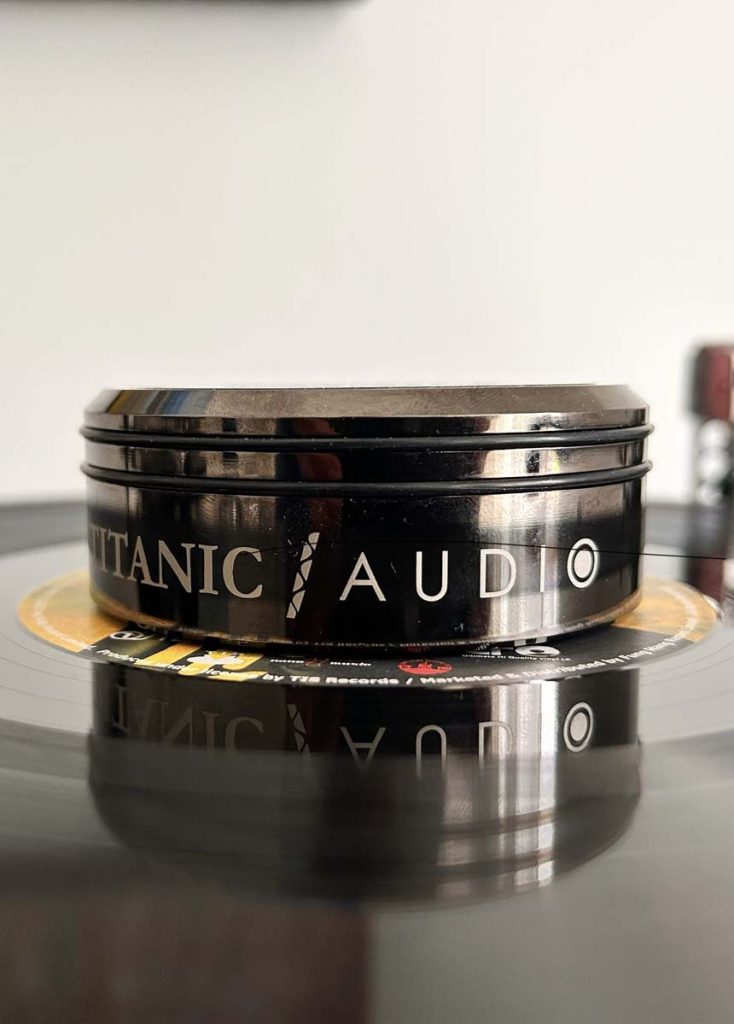
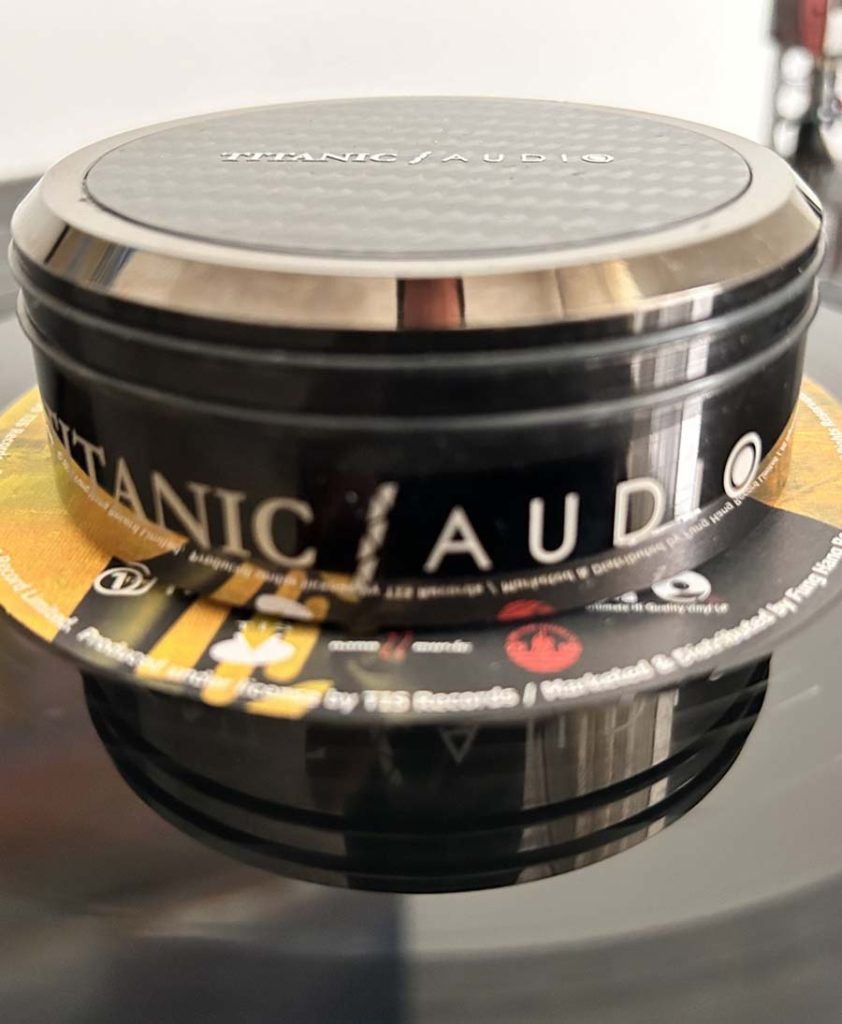
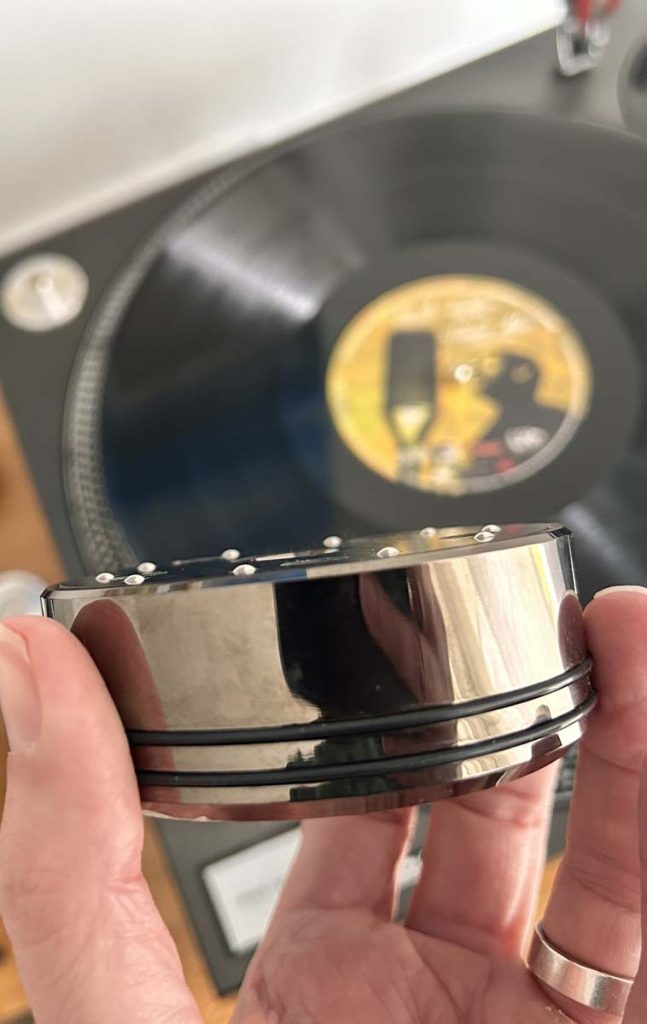
Next up was Dexter Gordon’s superb Tanya, from one of (in my opinion) his best albums, One Flight Up. This is a staple test track for me as the introductory drums should leap into the room, be clear and crisp, and the bass should have a bit of bite. The track opens with Donald Byrd’s wonderful and soulful trumpet and Art Taylor’s interruptive drum snaps before a more energetic ensemble moment where (if the track’s separation is not right) can sound indistinct and a bit cacophonous, bordering on brash. On careful listening with the Newton on the deck, the separation and crispness were there, the drum snap and bite made more solid, and in the ensemble moments, there is nothing but harmony and energy. The effect is subtle (as you would expect), but it’s quite a rare improvement that I’ve not often heard around this particular piece of music. Throughout the piece, Kenny Drew’s piano is clear and rings very true.
Following Tanya we shift gears just a little and take time to listen to a wonderful male jazz vocal – Scotty Wright. The album is Saint Mic, a 1-step, 180g Abbey half-speed mastered UHQLP (Ultra High Quality LP) out of the Hong Kong /Chinese label TIS. I had the utmost pleasure to see and hear Scotty live in San Francisco a few weeks ago playing at Keys Jazz with the superb Simon Rowe Trio, so his voice and presence, as well as his range and control of a mic are pretty well-known to me. Here the Newton was consistent in bringing some extra sharpness to imaging or removing (probably a better way to look at it) some incoherence and smearing. Percussion gained a small edge of clarity and definition too. Cymbals were tighter and drier, and decay was more detailed. It’s subtle but evident! There’s more obvious impact using Newton with the Technics with the Umami Red and I think this is probably due to more information being retrieved and changes being more obvious. In pursuit of our hobby, for me anyway, small incremental gains add up and so are usually worth the investment. Scotty’s voice is alive and textured, clear as day and just a joy to listen to.
Over the course of listening, the results were clearer on the Technics than on my Origin Live (with that fancy 4 layer platter) suggesting that maybe the Newton isn’t adding much that’s new to that already heavily damped mix, but is impacting more on the standard platter design of (in this case) the 1210 – so that will likely also translate to other turntables with standard platter designs.
QUIBBLES
It’s hard to quibble with such a beautifully machined, static product as the Newton and so I’find it hard to quibble at the investment, but, as always, that will be personal and relative to the system being used, and to the pursuit of ultimate vinyl playback quality. The bands around the weight for grip could be a little tighter, they did slip off once but this is a very minor moan.
CONCLUSION
With the right combination of turntable and mat, the Newton is certainly a damping solution to try out. The impact was more evident on a turntable that doesn’t already have lots of platter damping and so the effect was less apparent by far on my Origin Live with its 4 layer damping system. On the 1210 with a stock mat, it delivered that incremental gain we all seek.
It can deliver a sharpening of the image, a tightening of percussive dryness, and small increments of bass dimensionality and bite, all adding up to a better coherence of reproduction.
It’s price point means relative merit versus your overall vinyl front end is a consideration for some, but for those already invested in a good turntable and arm system, this isn’t a stretch of the imagination by any means for the sonic gains I experienced. For those who see them as pure accessories, or who don’t buy into their functionality, it’s probably a case of “move along and look elsewhere” – like with most things in our hobby some “get it”, some don’t – and who am I to argue!.
AT A GLANCE
Build Quality And Features:
Beautiful material and build quality, good heft in the hand, aesthetics and choice of materials is top notch and the innovation of the spring loading is a positive
Sound Quality:
As above, this will vary by complimented systems and materials, but with the right ones the sonic gain is evident
Value For Money:
This is always subjective and with the above taken into consideration I feel those with funds available and the right vinyl front end would find this a good return on investment
We Loved:
Materials, looks and innovation
We Didn’t Love So Much:
Nothing of note, maybe tighter elastic on the grip bands
Elevator Pitch Review: If you are invested in a good vinyl front end and have already sorted the main aspects but are looking to get any extra goodness you can, the Titanic Newton Clamp might be just what you are looking for. With its innovative and high-precision design, refined aesthetics and marked sonic results, paired with the right equipment it’s an investment worth your investigation.
Price: £500
ALAN MCINTOSH





















































